Abstract
Destruction rates of parasite eggs in stored sludge were examined to help understand the fate of these agents of enteric diseases in sludge lagoons. Eggs from the roundworms, Ascaris spp., Toxocara spp., Trichuris spp., and the tapeworm, Hymenolepis spp., were treated with domestic sludges by aerobic or anaerobic processes. Sludge samples seeded with eggs were stored at 4 or 25 degrees C or in a container inserted into the ground to simulate lagoon conditions. The number of eggs recovered from the samples decreased with storage time. The viability and infectivity of eggs recovered were related to the storage temperature; i.e., the eggs stored at 4 degrees C remained viable longer than those stored at 25 degrees C. After 25 months at 4 degrees C, the Toxocara eggs and some Ascaris eggs remained both viable and infective, whereas most of these eggs stored at 25 degrees C were rendered nonviable after 10 to 16 months of storage in sludge. Although storage temperature was found to be the most important factor affecting the destruction and viability of these eggs, other factors, such as the type of sludge digestion, whether or not the eggs were digested along with the sludge or added later, storage in the soil versus sludge, pH, and egg species also exhibited some minor effects. These controlled laboratory studies suggest that lagooning of sludge can be an effective method for the elimination of parasite eggs, particularly in warmer geographical locations.
Full text
PDF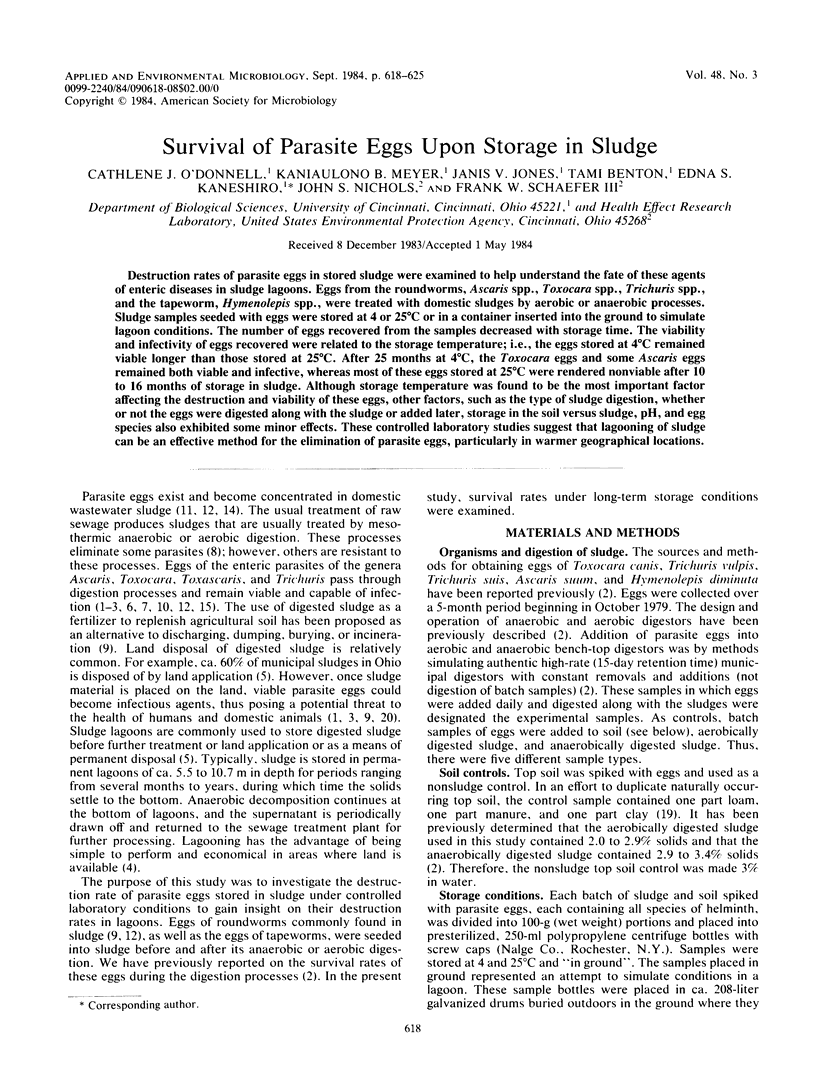
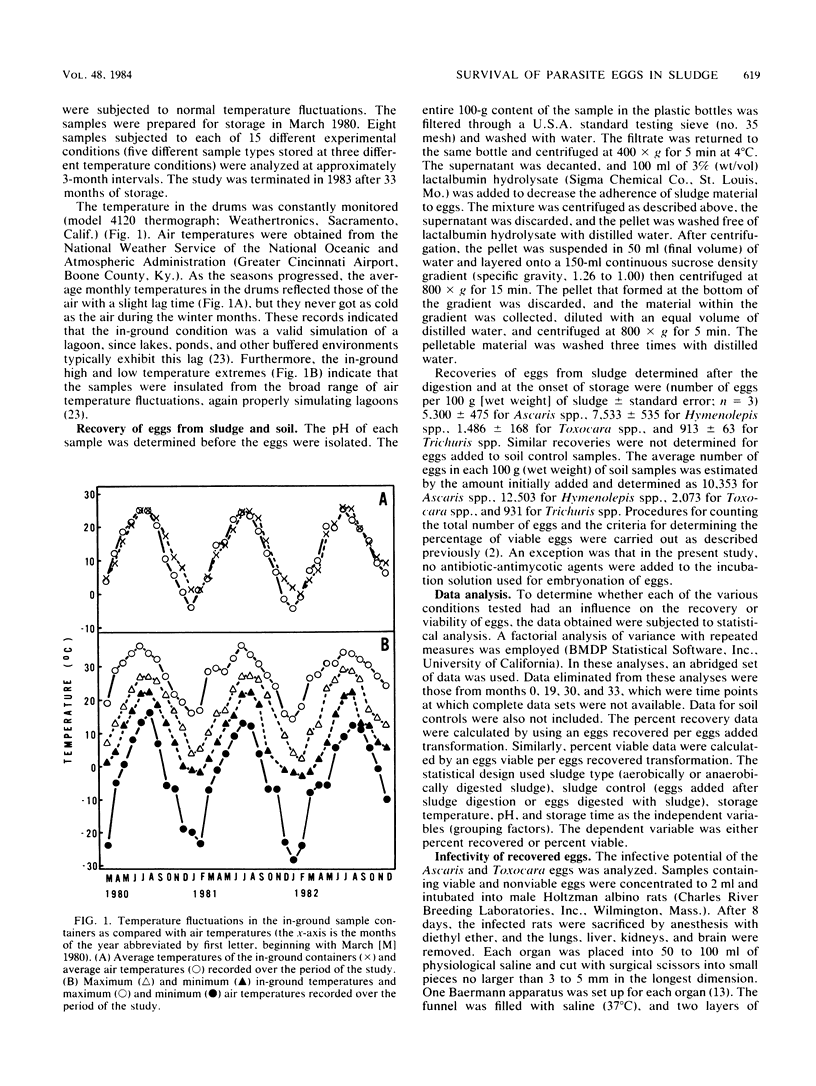
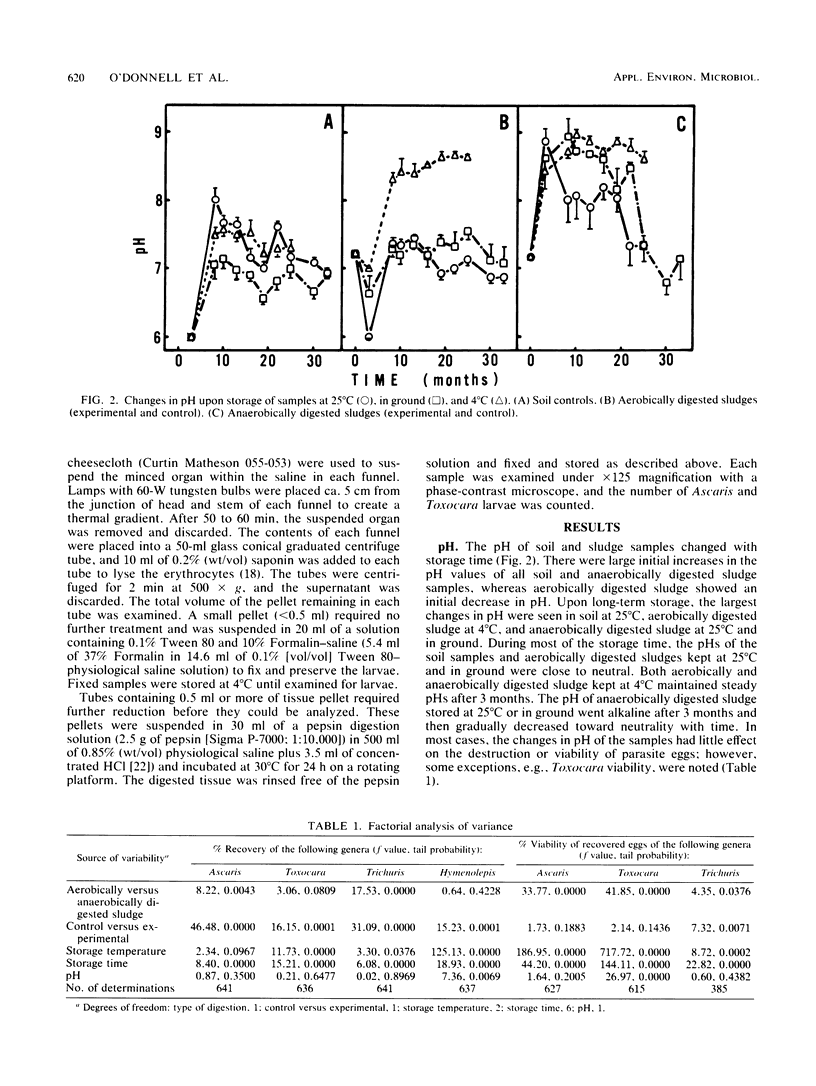
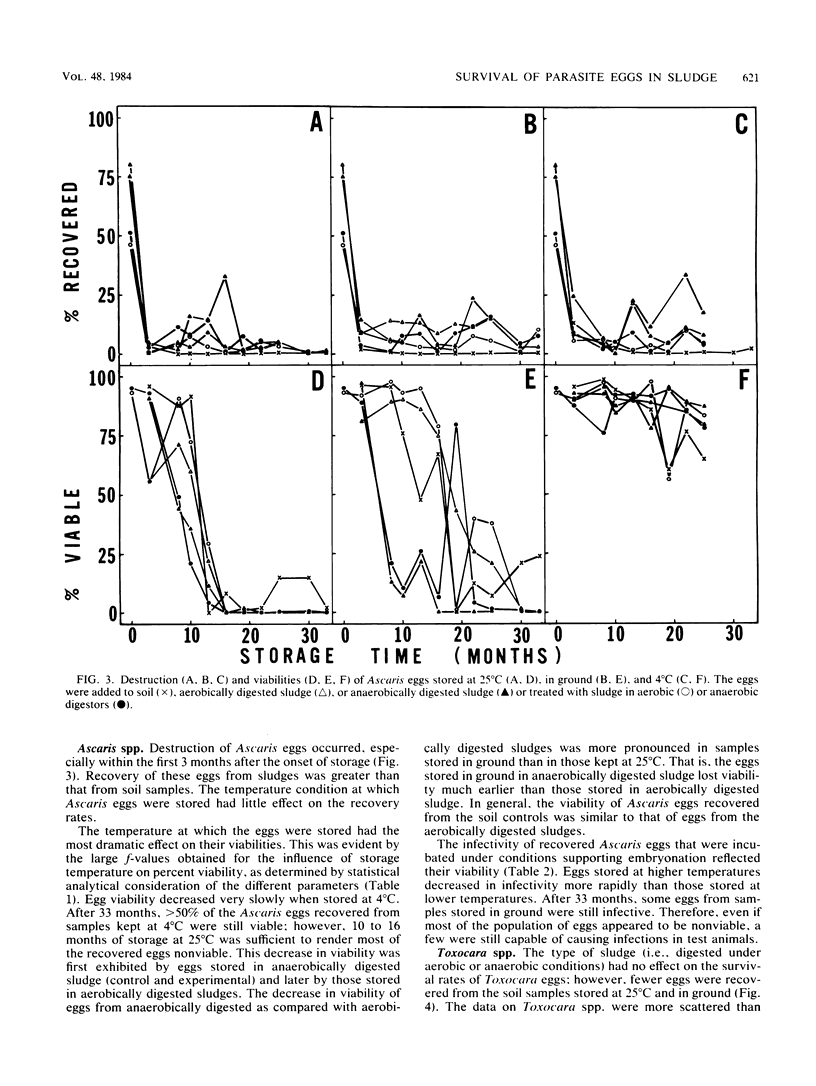
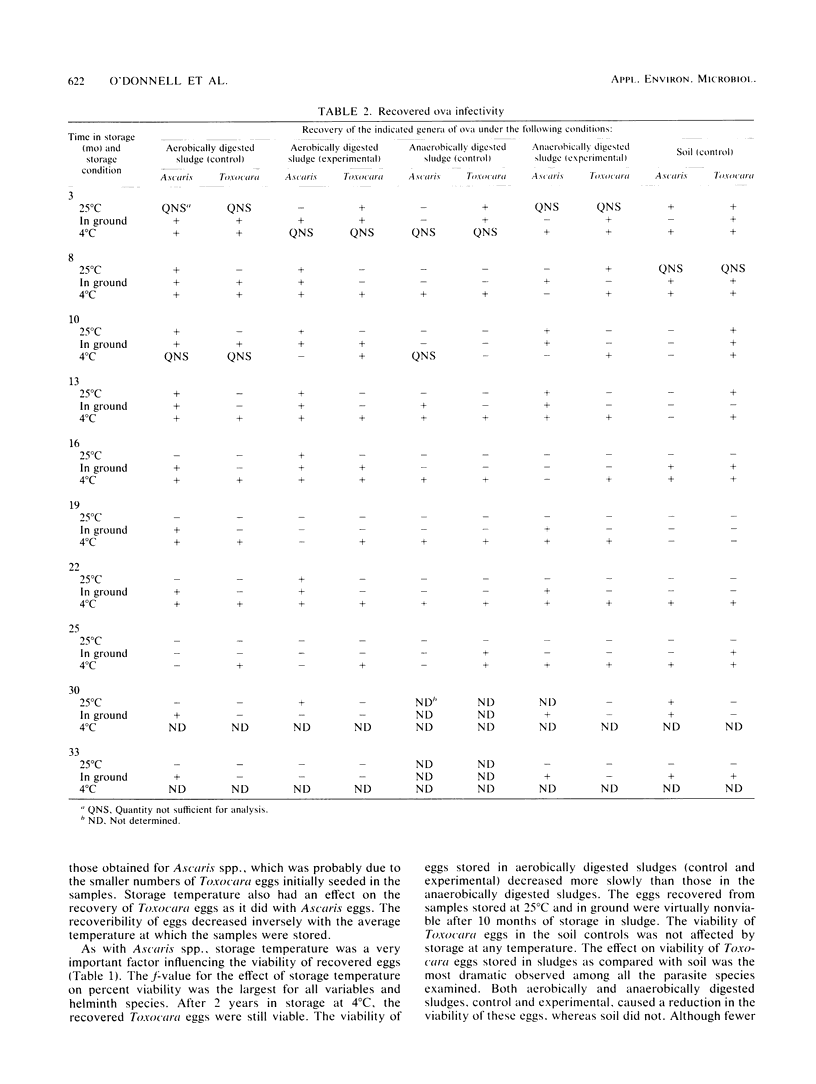
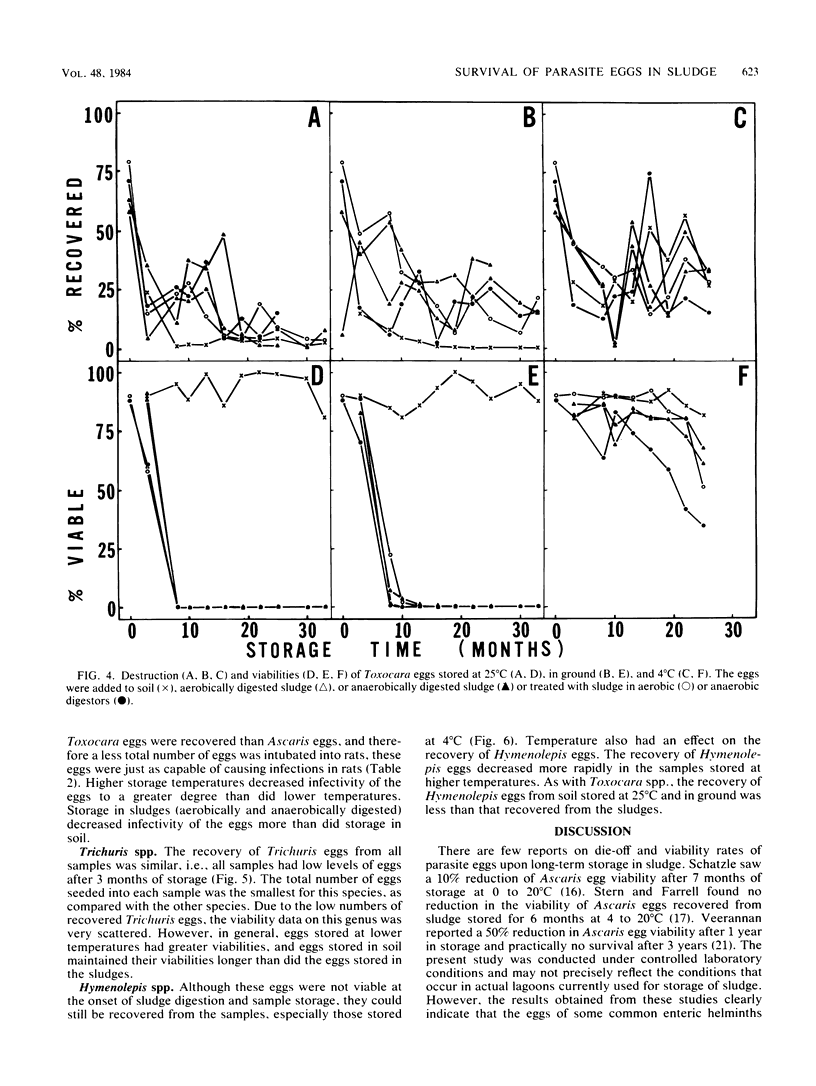
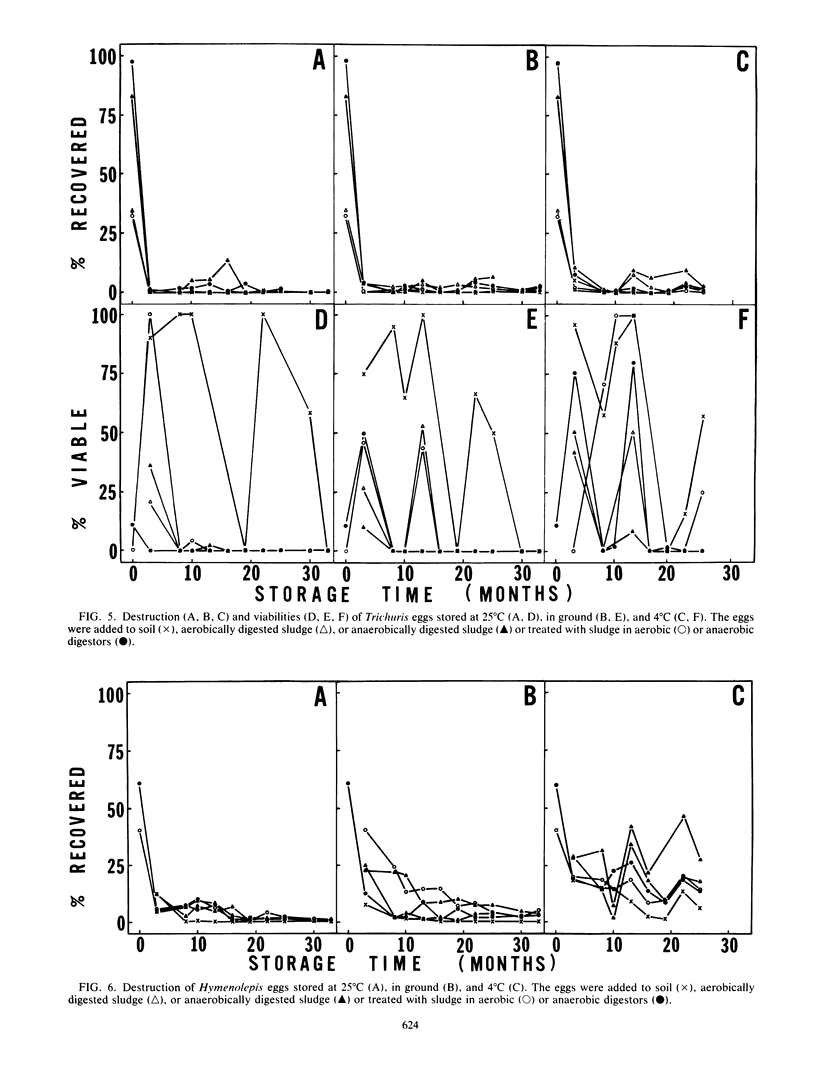
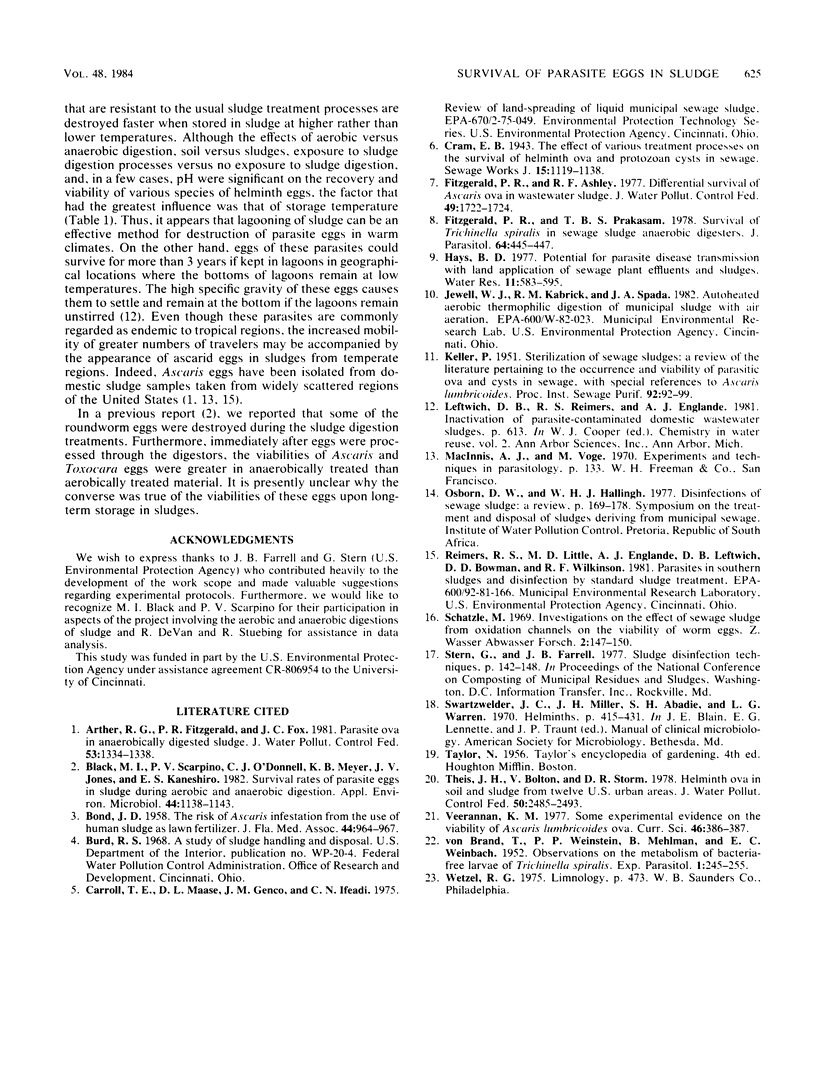
Selected References
These references are in PubMed. This may not be the complete list of references from this article.
- BOND J. O. The risk of ascaris infestation from the use of human sludge as lawn fertilizer. J Fla Med Assoc. 1958 Mar;44(9):964–967. [PubMed] [Google Scholar]
- Black M. I., Scarpino P. V., O'Donnell C. J., Meyer K. B., Jones J. V., Kaneshiro E. S. Survival rates of parasite eggs in sludge during aerobic and anaerobic digestion. Appl Environ Microbiol. 1982 Nov;44(5):1138–1143. doi: 10.1128/aem.44.5.1138-1143.1982. [DOI] [PMC free article] [PubMed] [Google Scholar]
- Fitzgerald P. R., Ashley R. F. Differential survival of ascaris ova in wastewater sludge. J Water Pollut Control Fed. 1977 Jul;49(7):1722–1724. [PubMed] [Google Scholar]
- Fitzgerald P. R., Prakasam T. B. Survival of Trichinella spiralis larvae in sewage sludge anaerobic digesters. J Parasitol. 1978 Jun;64(3):445–447. [PubMed] [Google Scholar]


